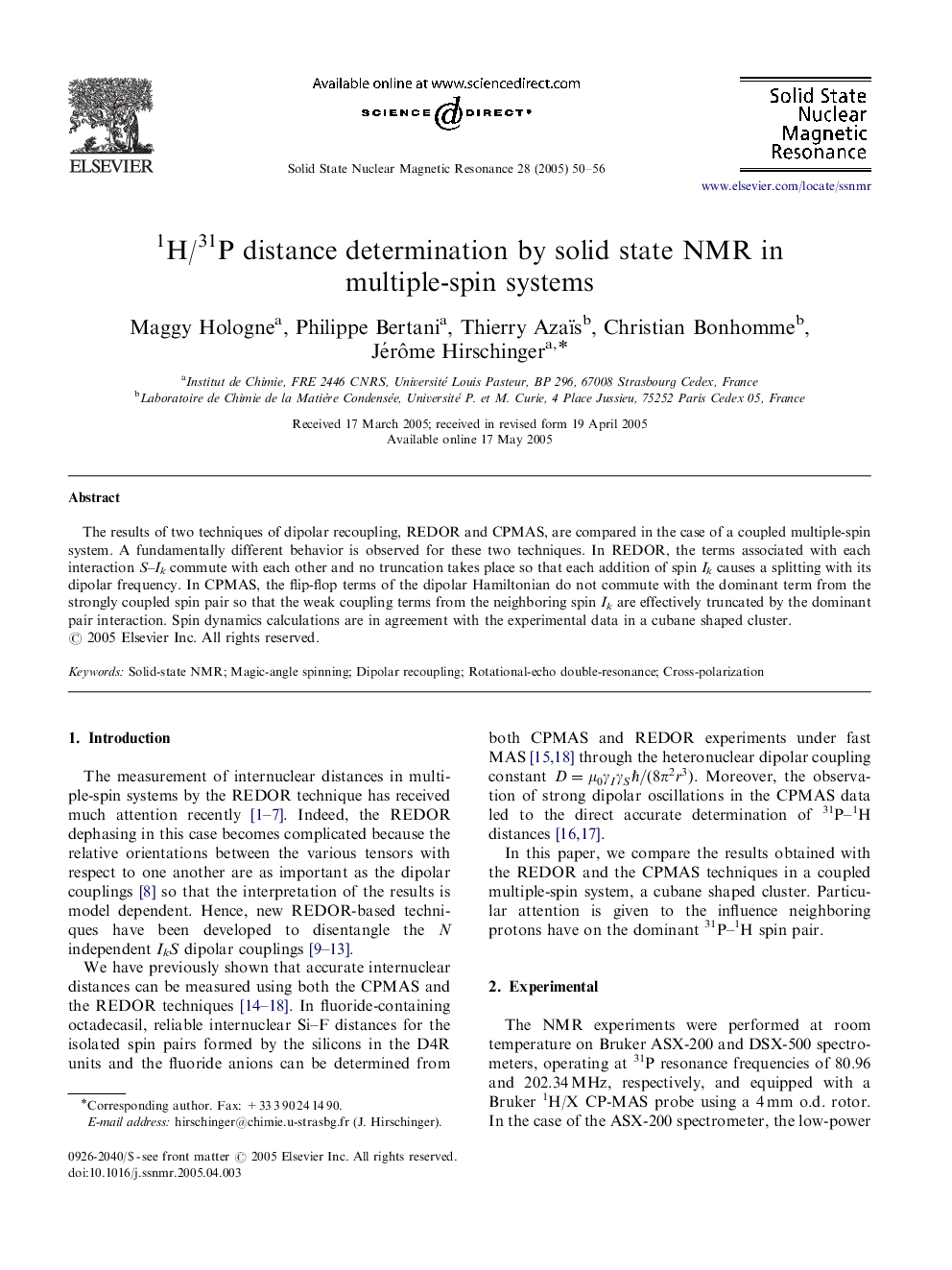| Article ID | Journal | Published Year | Pages | File Type |
|---|---|---|---|---|
| 9594254 | Solid State Nuclear Magnetic Resonance | 2005 | 7 Pages |
Abstract
The results of two techniques of dipolar recoupling, REDOR and CPMAS, are compared in the case of a coupled multiple-spin system. A fundamentally different behavior is observed for these two techniques. In REDOR, the terms associated with each interaction S-Ik commute with each other and no truncation takes place so that each addition of spin Ik causes a splitting with its dipolar frequency. In CPMAS, the flip-flop terms of the dipolar Hamiltonian do not commute with the dominant term from the strongly coupled spin pair so that the weak coupling terms from the neighboring spin Ik are effectively truncated by the dominant pair interaction. Spin dynamics calculations are in agreement with the experimental data in a cubane shaped cluster.
Keywords
Related Topics
Physical Sciences and Engineering
Chemistry
Physical and Theoretical Chemistry
Authors
Maggy Hologne, Philippe Bertani, Thierry Azaïs, Christian Bonhomme, Jérôme Hirschinger,
